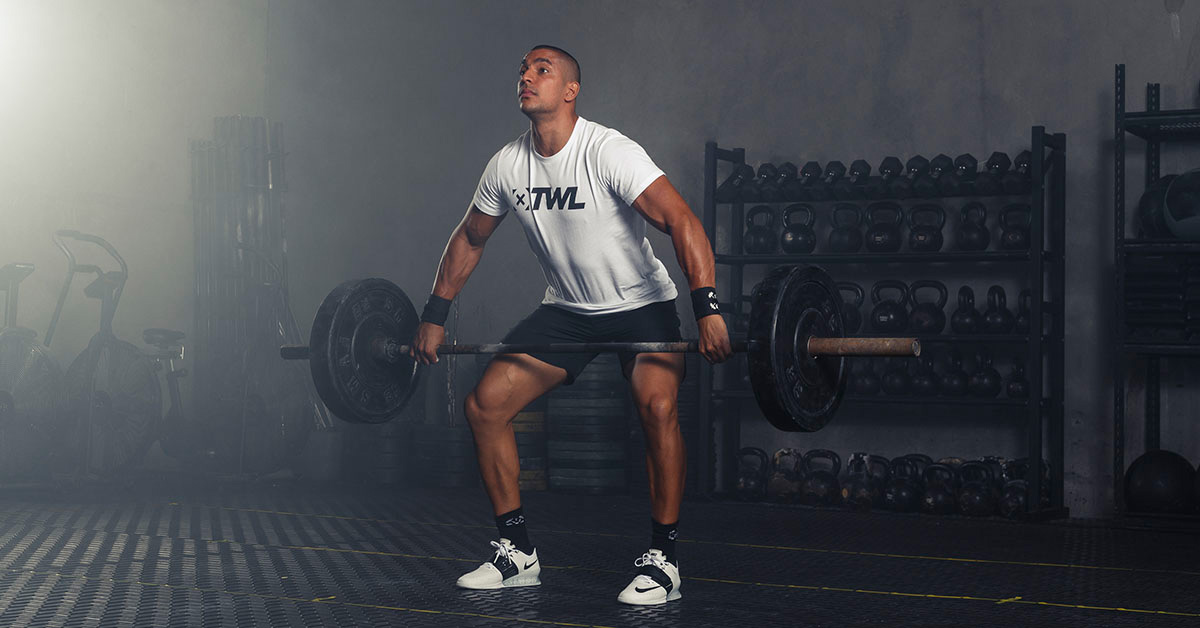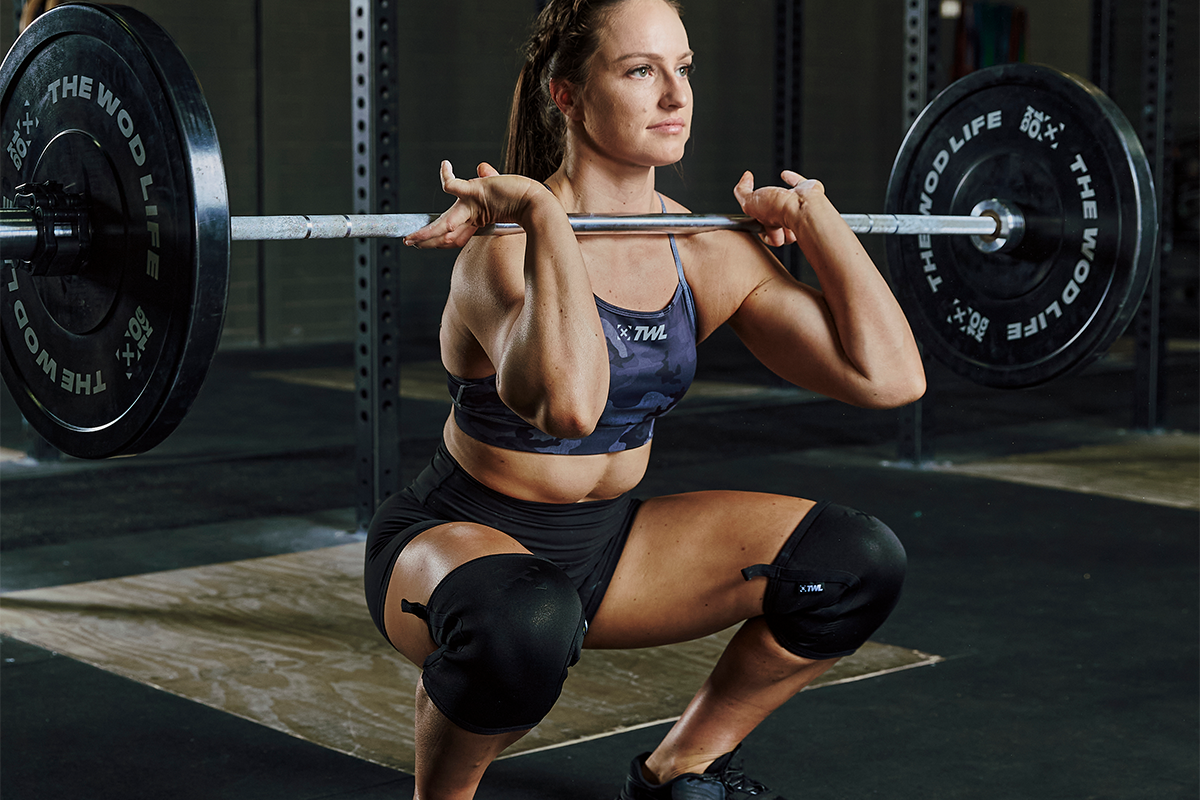What’s the easiest way to intimidate an athlete on the first day they walk into the gym? Teach them the snatch. The snatch is unequivocally the hardest movement you can ever hope to perform with a barbell. It requires a mixture of strength, power, coordination, and mobility, all happening simultaneously, to make the lift — and even then you still might miss it! That is how razor thin the margin of error is. You either love it or hate it.
The perfect snatch is more of a journey than a destination. I cannot guarantee that by the end of this article you will be snatching like Mat Fraser or Tia-Clair Toomey, but hopefully this guide can help point you in the right direction and teach you a few tips and tricks along the way to make the snatch a less intimidating movement the next time you walk into the gym.
The Olympic Weightlifting Guide to the Snatch for Beginners
1. Keep Your Eyes Up
This is one of those minor fixes that can make a world of difference for some athletes. The tendency, at least for most athletes, is to stare at the ground as they lift (probably because it’s a better option than staring directly into the butt of the person lifting in front of them). However, staring at the ground causes most athletes to not finish their lifts properly. Instead of finishing up and back, which causes the hips to open fully, they tend to finish over the bar, causing the lift to be left out in front.
Remember, your eyes (to an extent) lead everything. If your eyes are down, it brings the lift down.
Another benefit of keeping the eyes focused on the horizon is that it helps balance the athlete. By focusing on something off in the distance, it gives the athlete a reference point to look at throughout the duration of the lift.
2. Keep Your Arms Straight
This is snatching 101. In fact, one of the oldest sayings in the book is, “When the arms bend, the power ends.” The snatch is a leg-and-hip-driven movement. Period. By bending your arms, you are essentially turning this leg-hip movement into an arm exercise.
This is a tricky habit to break. Think about flexing your triceps before you even lift the bar off the ground to help keep those elbows locked out.
3. Get the Bar to Your Hips
Notice the phrasing here. It’s “get the bar to your hips,” not “get your hips to the bar” — a very important distinction. All we are trying to do, from the moment the bar lifts off the ground, is gain leverage over the bar, and we are at our mechanically most advantageous position with the bar in our hips.
The tendency is for athletes to get so wrapped up in getting the bar to make contact with their hips that they incorrectly thrust their hips forward to meet the bar. This, in turn, causes the bar to loop out in front and away from the athlete — something that we want to minimize from happening at all costs. The further away from you the bar moves, the heavier it gets.
Plus, while you might be able to manage a loopy bar path with lighter weights, as you go heavier, looping the bar out in front of you will often end in missed lifts.
The hips should meet the bar while moving vertically, not horizontally. The key here is to be patient with the lift. Let the bar get to your hips without rushing the turnover.
4. Keep Your Elbows High on the Turnover
After the bar leaves the hips, it’s important to pull your elbows high and to the outside to keep the bar as close as possible. The bar should almost ride your shirt on the way up. If the elbows drop too low or, heaven forbid, you keep your arms locked out the whole time, the bar will undoubtedly swing out in front of you. And if there is one common theme between all these points, it’s that the bar swinging away from you is a cardinal sin in weightlifting.
5. Be Active in the Receiving Position
All too often I see athletes snatch the bar, drop underneath, and pray that the bar lands where they need it to land. They don’t realize that the receiving position is an active position. You need to press up into the barbell and force it to land where you want it to land, not the other way around. Pressing up into the barbell will help get the shoulders into an active receiving position as well as make minor adjustments to the actual bar path.
Remember where this position puts you and the bar: chest up, knees out, full feet in contact with the floor, and the bar slightly behind your head, armpits turned out.
6. Maintain Your Back Angle
As the barbell lifts off the ground, the back angle of the athlete should remain the same. Oftentimes, we see athletes lift their hips up disproportionately fast compared to the barbell — something that we like to affectionately call the “stripper-style snatch.” As I mentioned earlier, the goal is to gain leverage over the bar. Therefore, we want to stay over the bar as long as possible.
This means pushing the knees back as the barbell lifts off the floor and keeping the shoulders in front of the barbell. Different athletes will be able to “stay over the bar” for varying lengths of time depending on their limb length. Here is a great video from Catalyst Athletics demonstrating how some of the best lifters in the world stay over the bar.
7. Have a Static Start (When You’re New to the Lift)
But Mat does it!? Yes, it’s true that having a dynamic start before attempting a lift is commonplace at almost every level of Olympic weightlifting. However, with beginners, I encourage a more static start, as they’re still getting familiar with the lifts. This helps build proper body awareness and muscle memory. Otherwise, it’s as if the athlete is working from a different starting position every time.
Once athletes have graduated from the newbie stage and built a strong positional foundation, they can start experimenting with a more dynamic start.
8. Don’t Skimp on Positional/Skill Work
This point cannot be overstated enough. Look, everyone wants to lift like Tia and Mat. Everyone wants to hit that marquee. Let’s rewind that and take another look at marquee lifts under the lights, because behind every one of those lifts are hours upon hours of positional/skill work. I mean, Mat has only been practicing Olympic lifting since about the age of 13.
Working the fundamentals, doing accessory work, and doing painstakingly boring mobility together make those big lifts possible. Working on the basics with the PVC or empty barbell for rep after rep is what builds good motor memory. Identifying weaknesses and hammering them through accessory movements like a snatch balance or snatch grip push press are what transform those weaknesses into strengths.
And mobility, do I even need to say it? Being able to comfortably catch a snatch in a rock-bottom position and sit there is half the battle. These are all the things that need practice. It’s not good enough to simply pick up a barbell and build to a max every single day. It’s the relentless pursuit of perfecting the basics that leads to those big moments.

















